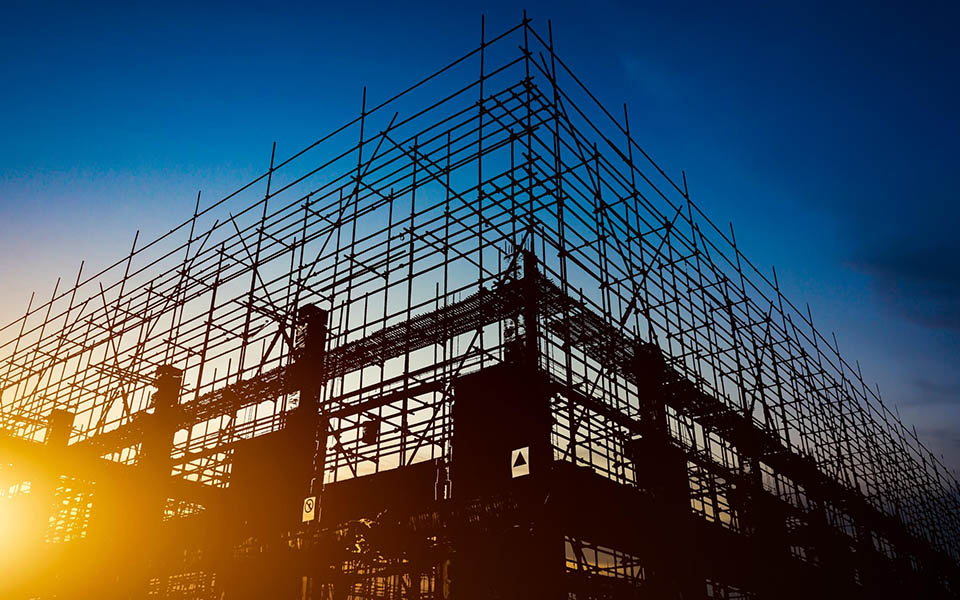The construction industry retained a surprising level of momentum in 2024. Construction spending currently stands at the highest level on record, contractors continued to add jobs at a faster-than-economywide-pace throughout the year, and backlogs remain at healthy—albeit lower than in 2023—levels.
This wasn’t supposed to be the case given the strength and variety of headwinds facing the industry heading into the year. High interest rates and tight lending standards made project financing extremely difficult. Ongoing labor shortages continued to plague the industry, frustrating timelines and driving up labor costs. Perhaps most concerning of all was uncertainty related to the presidential election and the delayed economic effects of those higher interest rates.
And to be clear, these headwinds did weigh on construction activity. Privately financed segments struggled throughout the year, and not only because of high borrowing costs and tight lending standards. For instance, the warehouse segment, which boomed during the early years of the pandemic as retail spending shifted from brick and mortar to eCommerce, has seen a 17% dip in investment over the past year. Investment in general office buildings, demand for which has been diminished by the increased prevalence of remote work, currently sits at the lowest level since 2017.
Then there’s the residential segment, which has seen a dramatic decline in activity as homebuilders await lower interest rates. Of course, that decline is occurring from the record levels of new home construction that occurred from mid-2022 to the end of 2023, but permitting levels over the past year suggest that the pace of new home construction will continue to slow during 2025.
Despite these factors, three gale-force tailwinds pushed the industry forward throughout 2024: federally incentivized manufacturing megaprojects, ongoing infrastructure outlays, and booming data center construction. Manufacturing-related construction spending alone accounted for about 75% of the increase in nonresidential construction over the past year, while spending on certain infrastructure categories like water supply and public safety have increased by approximately 20% over the past year.
And then there’s data centers. Driven by ever-surging demand for data, which will only continue to grow given emerging technologies like artificial intelligence and driverless vehicles, construction of data centers has increased 279% since the end of 2019. Investment in the segment has risen a blistering 37% over the past twelve months and should continue to surge throughout 2025.
These three tailwinds will continue to drive the industry forward in the coming year, but they’re not alone. Labor shortages, which have long plagued the construction industry, have eased over the past several months. The number of open, unfilled construction positions has fallen 40% over the past year, and the 3.4% of industrywide positions that are currently unfilled is the lowest share since 2020.
Construction materials prices have also been well-behaved in recent months, with input prices up just 0.5% over the past year. While prices are still up 39% since the start of the pandemic—a rate that significantly outpaces economywide inflation—ongoing input price moderation should help to control project costs.
Perhaps the strongest potential tailwind for construction activity in 2025 is the prospect of lower interest rates. While the Federal Reserve began lowering rates at their September meeting, rate cuts have yet to make a meaningful impact on borrowing costs. In fact, average mortgage rates are currently about half a percentage point higher than at the time of that first interest rate reduction.
If interest rates continue to decline in 2025, construction activity should pick up meaningfully by the third or fourth quarter. However, that’s a big if. Inflation has proved stickier than expected, and the incoming presidential administration will have to grapple with its expressed agenda and the potential inflationary effects of tariffs and immigration restrictions.
Despite this uncertainty, industry participants are optimistic about the coming year. More than 60% of contractors now expect their sales to increase over the first half of 2025, according to ABC’s Construction Confidence Index. If inflation continues to subside and interest rates do indeed fall throughout the year, that confidence will prove justified.
This article includes input from Anirban Basu, Chief Construction Economist, and Joseph Natarelli, National Construction Leader.
© Copyright CBIZ, Inc. All rights reserved. Use of the material contained herein without the express written consent of the firms is prohibited by law. This publication is distributed with the understanding that CBIZ is not rendering legal, accounting or other professional advice. The reader is advised to contact a tax professional prior to taking any action based upon this information. CBIZ assumes no liability whatsoever in connection with the use of this information and assumes no obligation to inform the reader of any changes in tax laws or other factors that could affect the information contained herein. Material contained in this publication is informational and promotional in nature and not intended to be specific financial, tax or consulting advice. Readers are advised to seek professional consultation regarding circumstances affecting their organization.
“CBIZ” is the brand name under which CBIZ CPAs P.C. and CBIZ, Inc. and its subsidiaries, including CBIZ Advisors, LLC, provide professional services. CBIZ CPAs P.C. and CBIZ, Inc. (and its subsidiaries) practice as an alternative practice structure in accordance with the AICPA Code of Professional Conduct and applicable law, regulations, and professional standards. CBIZ CPAs P.C. is a licensed independent CPA firm that provides attest services to its clients. CBIZ, Inc. and its subsidiary entities provide tax, advisory, and consulting services to their clients. CBIZ, Inc. and its subsidiary entities are not licensed CPA firms and, therefore, cannot provide attest services.
